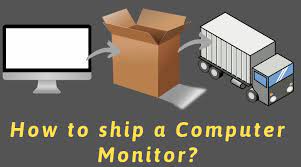3 Things You Should Know About Shipping Monitors
Shipping monitors are devices that help shipping companies keep track of their shipments and ensure they arrive at their destinations on time. They can be used to monitor a shipment’s location, speed, and condition. Shipping monitors can also be used to detect potential problems with a shipment, such as theft or sabotage.
Shipping monitors can be useful for both commercial and domestic shipments. Commercial shipments may use shipping monitors to prevent cargo from being lost or stolen, while domestic shipments may use them to keep track of the health and safety of the products being shipped.
There are a variety of different types of shipping monitors available, each with its own unique features and capabilities. Some models are capable of tracking multiple packages simultaneously, while others are designed specifically for tracking parcels within a single container.
Whatever your needs, there is likely a shipping monitor out there that is perfect for you. If you’re looking to protect your cargo or keep an eye on your shipments in general, a shipping monitor is likely the right tool for the job.
difference between cross docking and traditional warehousing what is flat shipping
Traditional warehousing is when an inventory of products is stored in a large, enclosed space. This type of warehousing has been around for many years and is the most popular form of storage. A product can be moved from one area to another in a traditional warehouse by being rolled or lifted on a moving belt or conveyor.

Cross docking is a newer form of warehousing that was developed in the 1990s. In cross docking, products are not stored in a single area but are instead spread out across several different areas. Products are moved between these areas by using forklifts and other automated devices. Cross docking is more efficient than traditional warehousing because it allows products to be moved quickly and easily between different areas.
One downside to cross docking is that it can be more difficult to find specific items if they are lost or misplaced. Another downside is that it can be more expensive to operate than traditional warehousing because it requires more automation.
